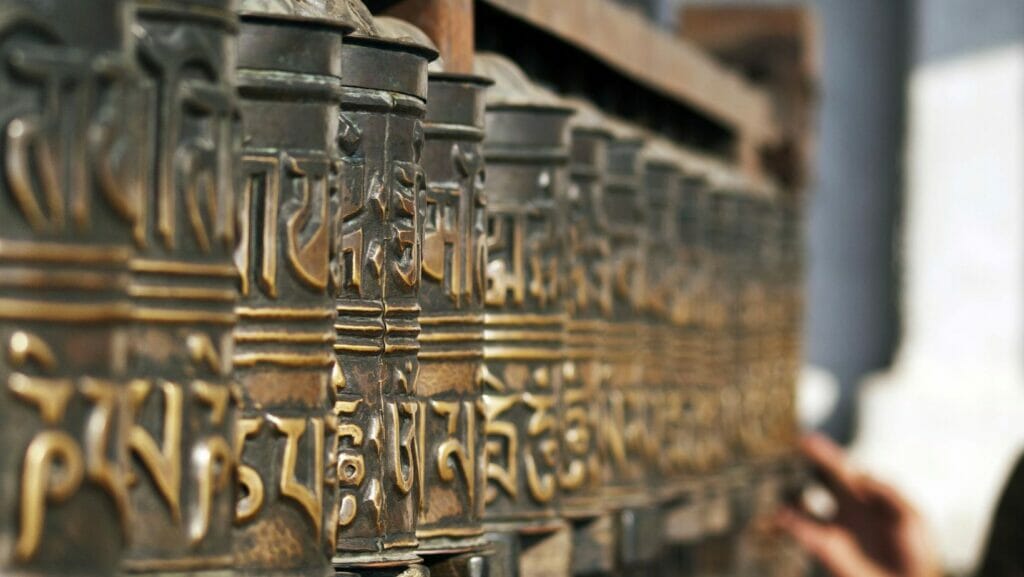
Understanding Mantras: Meaning, History, and Spiritual Use
Mantra is a word that has gained popularity with the rise of the modern wellness movement. However, mantras have been part of spiritual and cultural traditions for thousands of years. They form the foundation of many religious and meditative practices across the world. Mantras connect individuals to something greater than themselves—serving as a tool for focus, devotion, and creative expression. So, what exactly is a mantra, and how can you incorporate one into your spiritual journey?
What Is a Mantra?
There isn’t a single definition for the word “mantra” because its meaning varies across traditions. The first mantras were composed in Vedic Sanskrit in India around 1000 BCE. The root of the word, man, means “to think.” A mantra can be a sacred sound, a single word, or even a phrase with deep meaning.
The word Om (or Aum) is considered the first sound of the Universe. In Hinduism, Om is known as the pranava mantra—the source of all mantras. In Buddhism, mantras often encapsulate the essence of the Buddha’s teachings, or Dharma. Each tradition has its own understanding of the role and structure of mantras, but all agree that they serve to deepen awareness and spiritual connection.
Practitioners use mantras for meditation, focus, initiation, and celebration. Ancient texts such as the Rig Veda and Sama Veda include many sacred mantras that are still practiced today.
The Gayatri Mantra: A Sacred Example
One of the most well-known mantras from the Bhagavad Gita is the Gayatri Mantra. This sacred chant represents the divine light that connects all beings—the atma within all things.
Gayatri Mantra:
Om Bhur Bhuvaḥ Swaḥ
Tat-savitur Vareñyaṃ
Bhargo Devasya Dheemahi
Dhiyo Yonaḥ Prachodayāt
Translation:
“We meditate on the most adored creator, whose divine light illuminates all realms—physical, mental, and spiritual. May this divine light guide and awaken our intellect.”
Gayatri is considered the mother of the Vedas, bringing illumination to the mind and dispelling darkness. According to Vedic tradition, the best times to chant the Gayatri Mantra are during Satvic hours—between 4–8 a.m. and 4–8 p.m. Regular chanting can improve focus, learning, and mental clarity while reducing stress and anxiety.
Mantra in Tantra Yoga
Mantra also plays a central role in Tantra Yoga. In this tradition, practitioners use mantras during puja (worship) and meditation. Tantric mantras often include bija (seed sounds) that represent specific energies, aspects, or deities. By chanting these sounds, practitioners can call upon divine energy and direct their focus toward transformation or manifestation.
Mantras in Tantra are powerful tools for setting intentions. They can support goals such as prosperity, health, and spiritual growth. Many people also use mantras to energetically cleanse their space or body before meditation or ritual practice.
Mantras in Modern Yoga Practice
Today, mantras appear in many modern yoga classes, including vinyasa and restorative practices. Some teachers begin class with a mantra to help students ground into the present moment. Others close with a chant before savasana, inviting peace and reflection.
Chanting mantras during asana practice deepens concentration and connects students to the spiritual roots of yoga. Whether used as a simple word of intention or a sacred sound invoking the divine, mantras help cultivate mindfulness, devotion, and connection.
One can learn more about the use of mantra in personal practice and ancient sacred spiritual practices through teacher training such as My Vinyasa Practice’s 200-hour Tantra Teacher Training.
